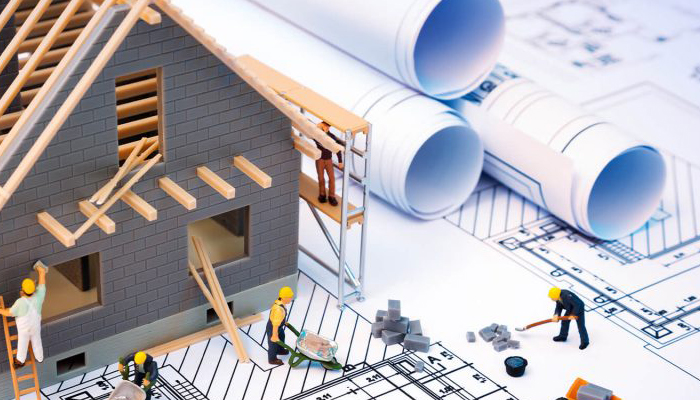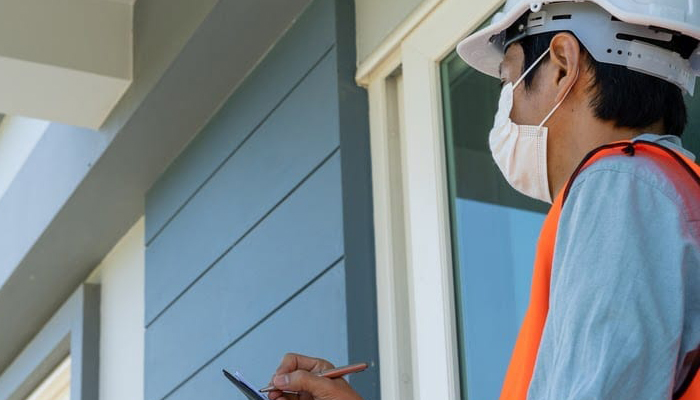Congratulations on your newly built home! As a homeowner, you want to ensure that your investment is of the highest quality and meets all the specifications and standards promised by the builder. A new build snagging survey can help in this situation.
A new build snagging survey is a comprehensive inspection of your newly constructed property to identify any defects, issues, or "snags" that may need to be addressed by the builder or developer before you move in. It is an essential step to protect your interests and ensure that your home is safe, functional, and built to the highest standards.
The Need For New Build Inspections
Many homebuyers assume that because a property is new, it must be flawless and free from defects. However, this is not always the case. New build homes, like any other property, can have hidden issues that are not apparent to the untrained eye. Some of the key reasons why they are necessary to include:
- Compliance With Building Codes And Regulations
New-build homes are constructed based on local building codes and regulations, which are meant to ensure that the property is safe and structurally sound. However, not all builders may strictly adhere to these codes, leading to potential violations. Any violations of the construction codes, such as flawed electrical wiring, insufficient insulation, or inappropriate plumbing, might be found during a new build inspection by SnagGo and could pose safety risks or necessitate expensive future repairs.
- Identifying Construction Defects
Despite rigorous quality control measures during construction, new build homes can have defects that may not be immediately visible. These defects can range from minor cosmetic issues, such as paint or drywall imperfections, to major structural problems, such as foundation cracks or roof leaks. An inspection can identify these defects early on, allowing the builder to rectify them before they turn into costly and time-consuming problems down the road.
- Verification Of Builder's Warranty
Most newly built homes come with a builder's warranty, which covers certain defects or issues for a specific period of time. However, not all builders honour their warranties, or the warranty may not cover all the potential issues that could arise. A survey can help verify the condition of the property and identify any defects that may need to be addressed under the builder's warranty, ensuring that you get the full benefit of the warranty coverage.
Common Misconceptions About New Build Homes
Before delving into the benefits of such inspections, it's important to dispel some common misconceptions about new homes that can lead homebuyers to overlook the need for inspections. Some of the key misconceptions include:
- New Builds Are Perfect
As mentioned earlier, many homebuyers assume that newly built homes are flawless and do not require inspections. However, this is far from the truth. Despite the rigorous construction standards, new build homes can have hidden defects that may not be apparent during a cursory walk-through. Ignoring the need for inspections can result in costly surprises down the road.
- Builder's Warranty Is Enough
Another common misconception is that the builder's warranty is sufficient to address any potential issues with a new build home. While builder's warranties can provide some protection, they may not cover all defects or may have limitations and exclusions. Relying solely on the builder's warranty without conducting a thorough inspection can leave you exposed to potential risks and costly repairs in the future.
- Building Codes Are Always Followed
Many homebuyers assume that newly built homes are constructed in strict compliance with building codes and regulations. This might not always be the case, though. Building codes can vary by location, and not all builders may adhere to them rigorously. An audit can verify if the property is compliant with the local building codes and regulations, ensuring that it meets the required safety standards.
- Visual Inspection Is Enough
Some homebuyers may rely solely on a visual inspection of a newly built home during the walk-through, assuming that it is enough to identify any potential issues. However, many defects may not be visible to the naked eye and may require a more comprehensive inspection by a professional. A thorough inspection involves a detailed assessment of the property's structure, systems, and components, using specialised tools and techniques to uncover any hidden defects.
Conducting A Thorough New Build Inspection

To ensure that you get the most out of your audit, it's essential to conduct a thorough assessment of the property. The following are some key steps to follow:
Hire A Professional Home Inspector
It's crucial to hire a qualified and experienced home inspector who specialises in inspections. Look for certifications, credentials, and reviews to ensure that the inspector is reputable and trustworthy. A professional home inspector has the expertise, knowledge, and specialised tools to conduct a comprehensive inspection and uncover any hidden defects.
Schedule The Inspection At Different Stages Of Construction
To get a comprehensive assessment of the property, it's advisable to schedule the inspection at different stages of construction. This may include pre-drywall inspection, pre-final inspection, and final inspection. Each stage has its unique aspects that need to be inspected, such as the foundation, framing, electrical wiring, plumbing, HVAC systems, insulation, and finishes. Inspecting the property at different stages allows the inspector to identify any potential issues before they are concealed by finishes or other components, giving you a better understanding of the property's overall condition.
Review Building Plans And Permits

Reviewing the building plans and permits is an important step in an inspection. The plans and permits provide valuable information about the design, materials, and systems used in the construction of the property. The inspector can compare the actual construction with the approved plans and permits to ensure that they match and are in compliance with building codes and regulations.
Conduct A Comprehensive Visual And Technical Inspection
This should cover both the visual and technical aspects of the property. The inspector should thoroughly assess the property's structure, systems, and components using specialised tools and techniques. This may include checking the foundation for cracks, inspecting the framing for proper installation, testing electrical outlets and switches, checking plumbing connections, inspecting HVAC systems for proper functioning, assessing insulation, and checking finishes for quality and workmanship. The inspector should also look for any signs of water damage, mould, pests, or other potential issues that may affect the property's safety, performance, and durability.
Document And Report Findings
A professional home inspector should provide a detailed report of their findings after the inspection. The report should include a comprehensive summary of the inspection results, including any defects or issues that were identified, their severity, and recommendations for repairs or further evaluation. The report should also include clear and concise documentation, such as photos, diagrams, and measurements, to support the findings. This information can be used as a reference during negotiations with the builder or for future reference as a homeowner.
Protecting Your Investment
New Build Snagging Surveys from SnagGo are essential for uncovering hidden truths about the property's condition and ensuring that it meets the required safety and quality standards. By conducting a thorough survey with the help of a professional home inspector, you can detect defects early on, protect your investment, verify the builder's warranty, and gain peace of mind knowing that your new home is built to the highest standards. So, before you close on your new build home, make sure to unveil the hidden truth through a comprehensive inspection. Your investment and peace of mind are worth it!
